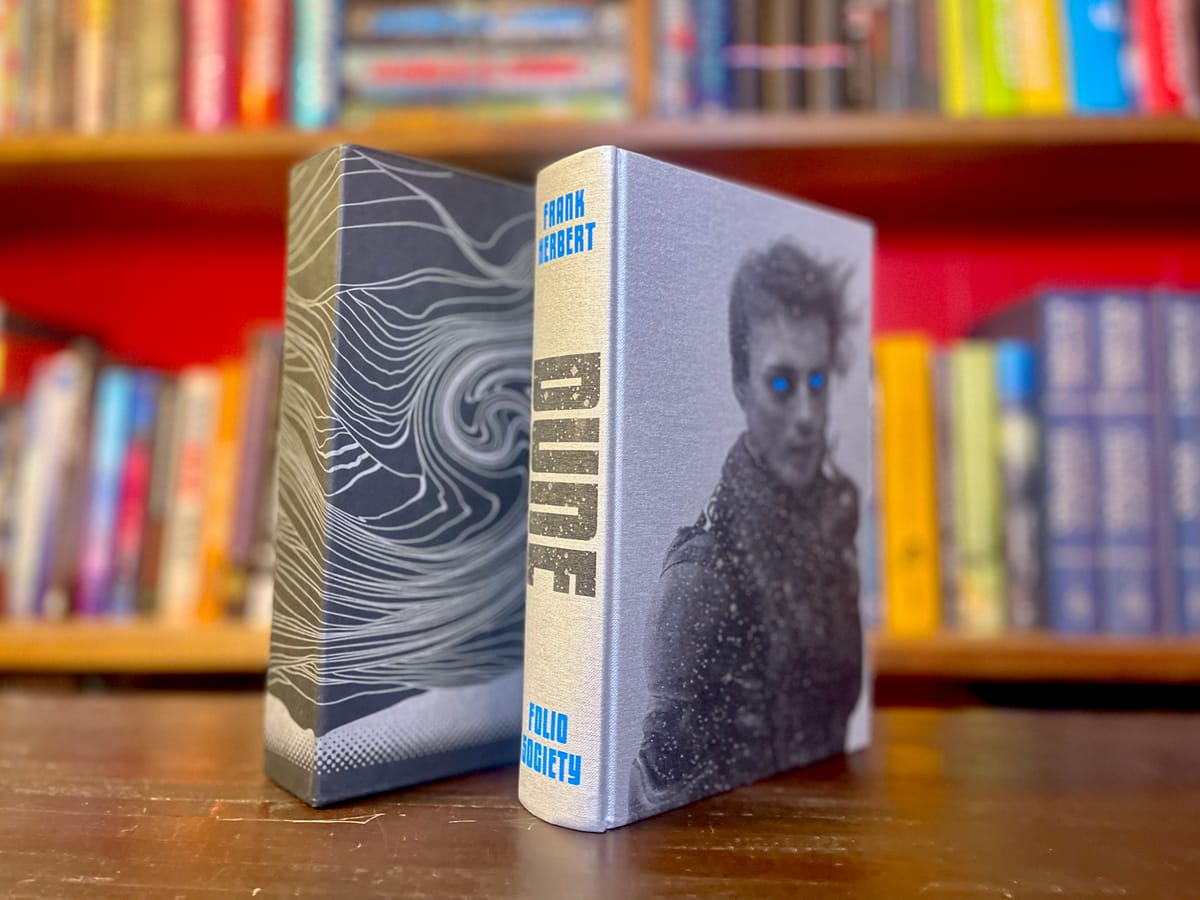The Folio Society's Dune is the definitive edition for fans
A fine volume for collectors

Last month, The Folio Society, the maker of high-end, collectible book editions commemorated the 50th Anniversary of the release of Frank Herbert’s novel, Dune. John has already gushed about it in his post, but I was drawn to this book because of the significance of the book in genre history, in addition to the physical object which Folio has created.
Herbert had a long career as a journalist before he turned to writing fiction. In 1956, he began writing about a dune stabilization project in Oregon, while at the same time developing a science fiction story about “the messianic convulsions which periodically inflict themselves on human society. I had this idea that superheroes were disastrous for humans.” Each idea began to work their way into one another, and he began to compile a massive collection of notes, which he in turn used to begin constructing a massive novel.
By 1963, he began putting his story down to paper, and completed Dune World, selling it to Analog Science Fiction and Fact as a serialized novel. It was an immediate hit, and began writing the second half to the story, which was serialized in Analog in 1965. Assembling the two parts together, Herbert had a massive tome that over twenty publishers rejected: it was too complicated or too big to publish. His break came when an editor for the Chilton Book Company read the serialization and purchased the novel. They were a publisher mainly known for publishing car manuals, and could handle a larger book. Dune was an immediate success, and earned the 1966 Hugo Award for Best Novel.
The Folio Society's edition of Dune is an astounding volume. It has an elegant slip case and is well packaged, but the book itself has been treated with the utmost respect. In addition to the text, there’s some additional material that makes this book well worth picking up. The introduction by Michael Dirda, a Pulitzer-winning academic and commentator lends a certain critical heft to this edition, and his words elegantly ties together the legacy of Dune and the life of its creator, helping to establish the importance of the book within the science fiction field, but also the larger literary universe.
At the end of the volume, Herbert’s son and heir to the Dune universe, Brian Herbert, penned an excellent afterword that examines his own complicated relationship with his father, and a broad sketch of the history of the creation of Dune. Where Dirda provides a critical viewpoint of the books, Herbert provides the personal, and each together create some essential reading for anyone who’s a fan of the book.
Finally, Folio commissioned artist Sam Weber to put together a number of paintings depicting scenes from the book. Scattered throughout the pages, they’re gorgeous works of art, looking back at the original artwork for the serializations, while adding their own, unique imprint on the story.
Collectively, this edition is probably the most definitive one for any fans of the novel, whether you’re interested in the story, its background or how it looks. This is an edition that I’ll hold onto for a long, long time.
This article was originally published on SF Signal in 2015.